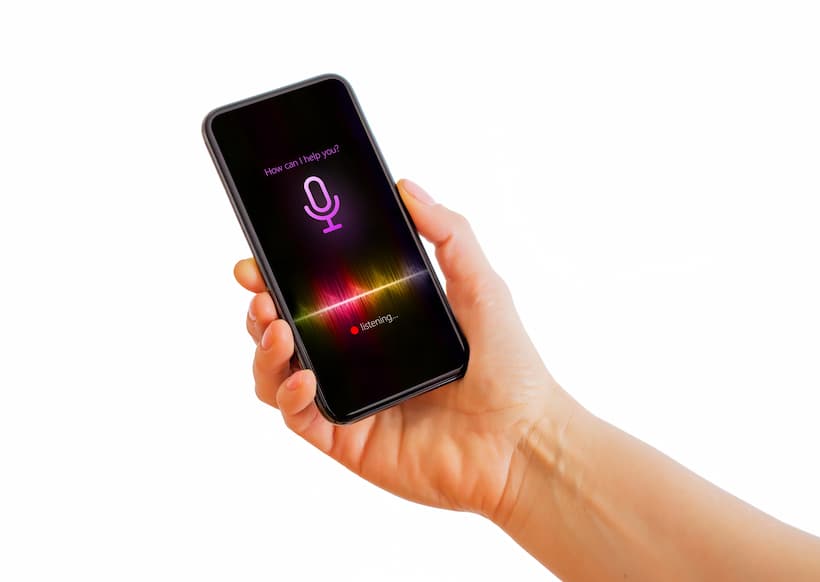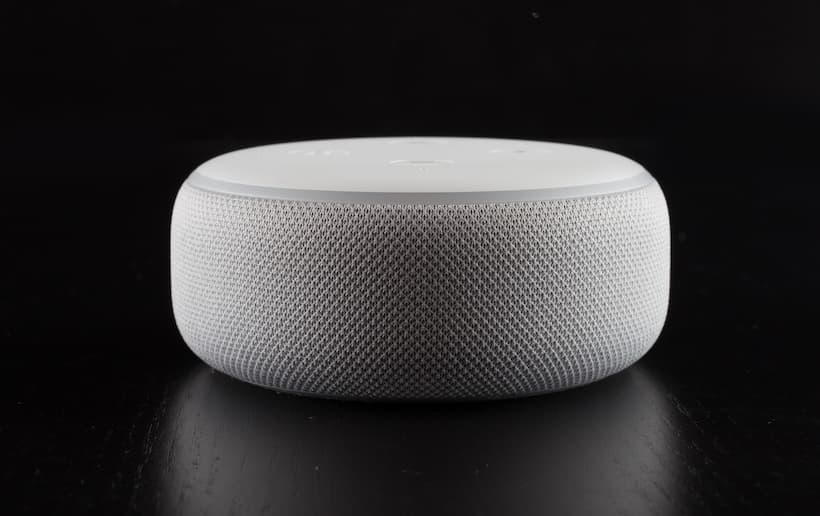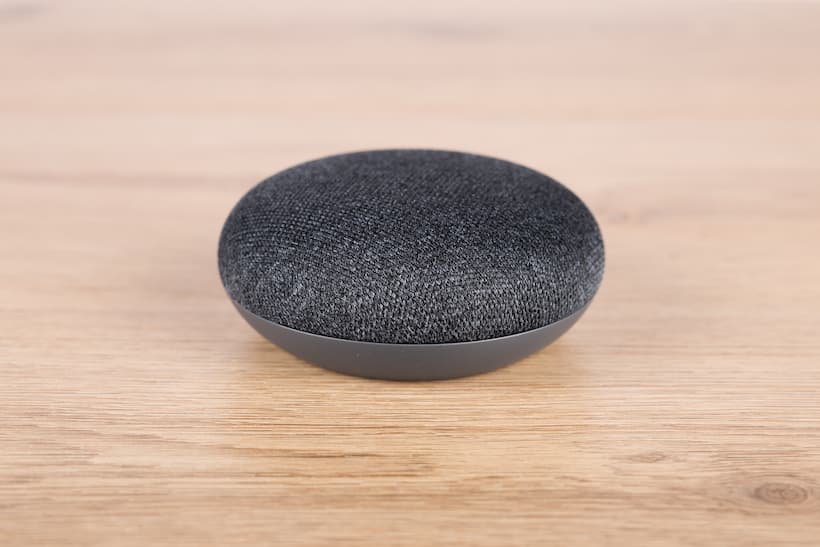AI voice assistants have become a ubiquitous part of modern life, helping us to carry out tasks, answer questions, and control our smart devices through voice commands.
With a range of popular options available, from Siri to Alexa to Google Assistant, it can be difficult to determine which one is the best fit for your needs. In this article, we will examine and compare the top AI voice assistants to help you decide which one deserves to take the crown as the reigning champion.
In this guide, you will find the central question: who is the best assistant?
The Science of Speech: A Behind-the-Scenes Look at How AI Voice Assistants Work
AI voice assistants, like Siri, Alexa, and Google Assistant, are designed to understand and respond to your voice commands.
When you speak to a voice assistant, it records your voice and analyzes it using a special algorithm. This algorithm breaks down your speech into individual sounds and matches them with words and phrases that are most likely to be what you meant to say.
After the voice assistant understands what you said, it generates a response that is tailored to your query. For example, if you ask “What’s the weather like today?”, the voice assistant will analyze your query and generate a response, such as “It’s currently 70 degrees and sunny outside.”
To generate responses, voice assistants use natural language generation techniques. This means that the algorithm analyzes the meaning of your query and generates a response in natural language that sounds like it was written by a human.
Voice assistants have come a long way and are now able to understand a variety of accents and dialects. However, they can still struggle with background noise or unclear speech. Overall, AI voice assistants are designed to make our lives easier by allowing us to perform tasks hands-free using voice commands.
Find Your Voice: The Top AI Voice Assistants to Simplify Your Life
Siri

Siri is a voice assistant developed by Apple, first introduced in 2011 as a feature of the iPhone 4S. It was one of the first mainstream voice assistants and has since become a widely recognized brand in the field of AI voice technology.
Strengths and Weaknesses
Siri’s strength lies in its integration with Apple’s ecosystem, allowing users to seamlessly interact with their devices through voice commands. It also boasts a wide range of features, including the ability to make phone calls, send messages, set reminders, and access information on demand. In addition, Siri can control smart home devices and interact with third-party apps, providing a wide range of functionality to users.
However, Siri has also faced criticism for its accuracy and responsiveness. Compared to other voice assistants, Siri is often considered less reliable in understanding and executing complex commands. It also lacks some of the advanced features and customization options offered by its competitors.
User experience and features
In terms of user experience, Siri is designed to be intuitive and user-friendly, with a conversational interface that responds to natural language commands. It also features a variety of voices and accents to choose from, as well as the ability to customize the wake word (the phrase that activates the assistant).
Comparison
When compared to other voice assistants, Siri performs well in terms of integration with Apple devices and services, but falls short in terms of overall accuracy and responsiveness. Competitors such as Google Assistant and Amazon Alexa offer more advanced features and customization options, as well as a wider range of integrations with third-party services and devices.
Overall, Siri remains a popular choice for users who are heavily invested in the Apple ecosystem, but may not be the best option for those seeking the most advanced and customizable voice assistant experience.
Alexa

Alexa is a virtual assistant developed by Amazon, and it was first introduced in November 2014. It is powered by natural language processing (NLP) and machine learning algorithms, and it can be accessed through devices such as the Amazon Echo, Echo Dot, and Echo Show. Alexa can perform various tasks such as setting alarms, providing weather updates, playing music, and controlling smart home devices.
Strengths and Weaknesses
One of Alexa’s strengths is its ability to integrate with a wide range of smart home devices, allowing users to control their homes through voice commands. Alexa also has a vast library of skills, which are third-party apps that can be used to expand its functionality. However, some users have raised concerns about Alexa’s privacy and security, as it is always listening and recording voice data.
User experience and features
Alexa’s user experience is generally intuitive and straightforward. Users can activate it by saying “Alexa” and then issuing a command or asking a question. Alexa can perform a variety of tasks, such as playing music, setting reminders, and answering questions. It can also be used to make phone calls and send messages to other Alexa users.
Comparison
Compared to other voice assistants, Alexa is known for its extensive library of skills and its ability to integrate with a wide range of smart home devices. However, some users find the experience of interacting with Alexa to be less conversational than other voice assistants such as Google Assistant.
Google Assistant

Google Assistant is a virtual assistant developed by Google, and it was first introduced in May 2016. It is powered by Google’s advanced search algorithms and natural language processing (NLP) technology. Google Assistant can be accessed through devices such as Google Home, smartphones, and smartwatches.
Strengths and Weaknesses
One of Google Assistant’s strengths is its ability to answer complex questions and provide accurate information quickly. It also has a more conversational user experience than some other voice assistants. However, some users have expressed concerns about Google’s data collection practices and the privacy implications of having an always-on microphone in their home.
User experience and features
Google Assistant’s user experience is designed to be conversational and intuitive. Users can activate it by saying “Hey Google” or “OK Google” and then issuing a command or asking a question. Google Assistant can perform a wide range of tasks, such as setting reminders, playing music, and controlling smart home devices. It can also integrate with other Google services, such as Google Calendar and Gmail.
Comparison
Compared to other voice assistants, Google Assistant is known for its advanced search capabilities and conversational user experience. It also has a wider range of integrations with other Google services. However, some users find that it can be overly chatty and intrusive at times.
Cortana

Cortana is a virtual assistant developed by Microsoft, and it was first introduced in April 2014. It is named after the AI character from the Halo video game series. Cortana can be accessed through devices such as the Microsoft Surface, Windows 10, and the Harman Kardon Invoke smart speaker.
Strengths and Weaknesses
One of Cortana’s strengths is its ability to integrate with other Microsoft services, such as Office 365 and Outlook. It also has strong natural language processing capabilities and can understand complex commands. However, some users have criticized Cortana’s limited functionality compared to other voice assistants.
One weakness of Cortana is its limited availability outside of Microsoft products. While Cortana can be used on Windows devices, it is not as widely available on other platforms as other voice assistants. Additionally, Cortana’s functionality is more focused on productivity and organizational tasks, and may not be as useful for other types of tasks.
User experience and features
Cortana is designed to be a personal productivity assistant, helping users manage their daily tasks and stay organized. It can be activated by voice or by typing in the search bar on Windows devices. Cortana can perform a wide range of tasks, including setting reminders, playing music, and answering questions.
One unique feature of Cortana is its ability to integrate with Microsoft’s suite of productivity tools. Users can ask Cortana to schedule meetings, send emails, and create reminders with ease.
Comparison
When compared to other voice assistants, Cortana is often seen as more limited in its capabilities due to its exclusivity to Microsoft products. However, Cortana’s integration with Microsoft’s suite of productivity tools is a significant advantage for Microsoft users. Additionally, Cortana’s natural language processing capabilities are highly advanced, allowing for more conversational interactions with the assistant.
Bixby

Bixby is Samsung’s AI voice assistant. It was first introduced with the Samsung Galaxy S8 and has since been included in many other Samsung devices. Bixby is designed to be an all-in-one solution for Samsung device users, offering a wide range of features and capabilities.
Strengths and Weaknesses
One of Bixby’s strengths is its ability to integrate with Samsung’s ecosystem of devices and services. It can be used to control a wide range of Samsung devices, from smartphones and tablets to TVs and refrigerators. Bixby is also capable of handling complex commands and can perform multiple actions with a single voice command.
One weakness of Bixby is its limited availability outside of Samsung devices. While other voice assistants can be used on a variety of devices, Bixby is exclusive to Samsung products. Additionally, Bixby’s natural language processing capabilities are not as advanced as some of its competitors.
User Experience and Features:
Bixby is designed to be easy to use for Samsung device users. It can be activated by pressing a dedicated button on Samsung phones, or by using the wake word “Hi Bixby.” Bixby can perform a wide range of tasks, including setting reminders, playing music, and answering questions.
One unique feature of Bixby is its ability to use the camera on Samsung devices to provide visual search results. Users can point their camera at an object and ask Bixby to provide information about it.
Comparison
When compared to other voice assistants, Bixby is often seen as more limited in its capabilities due to its exclusivity to Samsung devices. However, Bixby’s integration with Samsung’s ecosystem of products is a significant advantage for Samsung device users. Additionally, Bixby’s ability to handle complex commands and its visual search feature set it apart from other voice assistants.
The Endless Possibilities of AI Voice Assistants in Our Daily Lives
AI voice assistants have become an integral part of our daily routines, helping us simplify various tasks with ease. Here are some examples of how voice assistants can be used to simplify daily tasks:
- Setting reminders: Voice assistants can help you stay organized by setting reminders for important events or tasks. Simply say, “Hey Siri, remind me to pick up groceries at 5 pm,” and the voice assistant will set a reminder for you.
- Making phone calls: Voice assistants can make hands-free phone calls for you, saving you time and effort. You can simply say, “Hey Alexa, call John,” and the voice assistant will make the call for you.
- Sending messages: You can use voice assistants to send messages to your contacts without having to type them out. Simply say, “Hey Google, send a message to Sarah saying I’ll be late for dinner,” and the voice assistant will send the message for you.
- Controlling smart home devices: Voice assistants can be used to control smart home devices such as lights, thermostats, and security systems. You can say, “Hey Siri, turn off the living room lights,” and the voice assistant will control the lights for you.
- Providing information on demand: Voice assistants can provide you with information on a variety of topics, such as weather, news, and traffic updates. Simply ask, “Hey Alexa, what’s the weather like today?” and the voice assistant will provide you with the latest weather report.
These are just a few examples of how voice assistants can simplify daily tasks, making our lives easier and more convenient. With the increasing capabilities of AI voice assistants, we can expect to see more innovative and helpful use cases in the future.
Breaking Barriers: How AI Voice Assistants Are Making the World More Accessible
AI voice assistants have the potential to break down barriers and make the world more accessible for people with disabilities. By providing voice-based navigation and enabling hands-free communication, these devices can help individuals with physical and visual impairments navigate the world more easily and interact with technology in new and innovative ways.
For visually impaired users, voice assistants can provide a range of useful features. For example, they can provide voice-based navigation through GPS, helping users find their way around unfamiliar environments. Additionally, they can read text aloud, making it easier for visually impaired individuals to consume information from the web, books, or other sources.
For people with motor impairments, voice assistants can offer hands-free communication and control of devices. This includes controlling smart home devices, making phone calls, sending messages, and accessing information without the need for physical input.
AI voice assistants can also help individuals with cognitive disabilities, such as autism or attention deficit hyperactivity disorder (ADHD). For example, they can help with scheduling and reminders, provide calming music or sounds, and help with educational tasks.
In addition, voice assistants can be customized to suit the needs of specific individuals. They can learn and adapt to the user’s preferences and behaviors, creating a more personalized and user-friendly experience.
Overall, AI voice assistants have the potential to revolutionize accessibility, making it easier for people with disabilities to navigate the world and access technology. With further advancements in the technology, we can expect to see even more innovative ways that these devices can be used to support individuals with disabilities.
Conclusion
You must be wondering what is the best voice assistant?
While all of the voice assistants we discussed have their strengths and weaknesses, we believe that Google Assistant stands out as the best overall voice assistant. Google Assistant has excellent natural language processing capabilities and a vast knowledge base, allowing for more conversational interactions with the assistant.
Additionally, Google Assistant has a wide range of features and integrations with third-party apps and services, making it more versatile and flexible than other voice assistants.
However, the choice of voice assistant ultimately depends on personal preferences and needs, so we encourage readers to try out different voice assistants and decide which one works best for them.
Frequently Asked Questions
1. What privacy and security concerns should I be aware of when using AI voice assistants?
When using AI voice assistants, there are privacy and security concerns that you should be aware of. These concerns include the potential for voice data to be collected and stored, as well as the risk of third-party access to that data.
It’s important to carefully review the privacy policies and settings of your voice assistant, and to be mindful of what information you share through voice commands.
Additionally, be cautious of using voice assistants on public Wi-Fi networks or in shared spaces, as this can increase the risk of unauthorized access to your data. Regularly updating your device and voice assistant software can also help address any security vulnerabilities that may be discovered.
2.What is the most realistic AI voice?
The most realistic AI voice can be subjective and depend on personal preference. However, many experts consider Google Assistant’s voice to be one of the most natural and realistic sounding, thanks in part to Google’s advanced speech synthesis technology, which uses machine learning to create natural-sounding intonation and inflection.
Other voice assistants, such as Amazon’s Alexa and Apple’s Siri, have also made significant strides in improving the naturalness and realism of their voices. Ultimately, the most realistic AI voice is the one that sounds the most natural and human-like to the individual listener.
3.Is Siri listening all the time?
Siri is designed to only listen when triggered by the “Hey Siri” command or when activated manually by pressing the home button on an iPhone or iPad. However, Siri is always in a listening mode, waiting for the trigger phrase, which means that the microphone on your device is technically always on and ready to respond.
Once Siri is triggered, it will continue to listen until it has completed the task or received a command to stop listening. It’s important to note that the voice data collected by Siri is encrypted and stored locally on the device, and is not sent to Apple’s servers unless the user specifically requests it by asking a question or making a request that requires an internet connection.
However, it’s always a good practice to review and adjust the privacy settings of your device and voice assistant to ensure that you are comfortable with the level of data collection and usage.